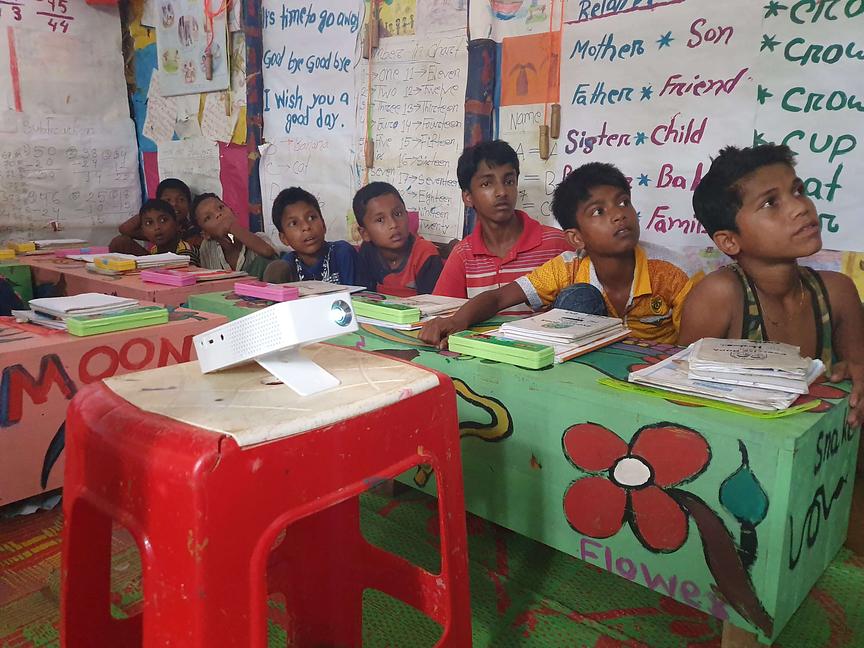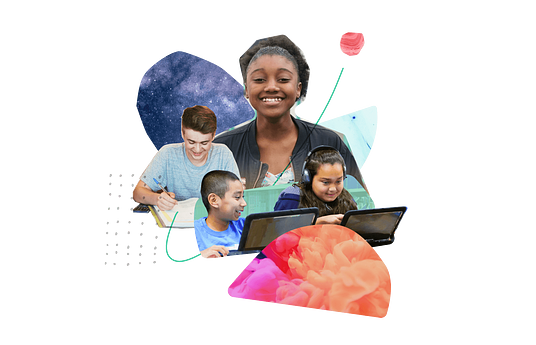Over a million Rohingya refugees live in Bangladesh, unable to return to hostile Myanmar anytime soon. Only English or Burmese textbooks are allowed in the vast refugee camps - languages the Rohingya scarcely understand. Consequently an entire generation of children are at risk of growing up without learning to read or write; lacking the basic skills needed to lead a healthy, productive life.
We create colourful, engaging video lessons to use in 144 classrooms within Kutupalong camp, on Bhasan Char Island and within host communities in Cox’s Bazar. Trained refugee teachers utilise hundreds of videos, shown on portable handheld projectors to teach around 7,300 learners.
Lessons are based on the government-approved Myanmar curriculum and ensure that teachers can follow textbooks and children can actually understand what is being taught. The videos combine footage of Rohingya teachers explaining concepts with pictures and cartoons that bring subjects to life and make classes fun. The children tell us the videos are their favourite part about school.
To enhance the core curriculum, videos on subjects like health, human rights and culture are shown to allow the children to see aspects of the world that they didn't previously know existed, giving them a glimpse into life outside the confines of the camps or slums where they live.
Children on the Edge only provide 4% of education provision in the camps, but our learning centres are consistently ranked highest by authorities and children. Classrooms have a 96% average attendance rate and teachers continue to describe how children learn and concentrate better with digital lessons, and retain information for longer.
Alongside digital lessons, an online platform - ‘Moja Kids’ - brings weekly student-made digital newsletters to all our classrooms. The children delight in both creating and watching the Moja Kids newsletters, giving them a chance to express themselves, share their talents and interact with others to tackle their sense of isolation. We are expanding the use of Moja Kids to India so the children can connect with others living in challenging environments.
Since 2010, Children on the Edge have set the standard for education delivery for Rohingya refugee children in Bangladesh and encourage other agencies to adopt our unique model so that many more Rohingya children can gain a meaningful education.
Please contact us at communications@childrenonthedge.org to find out more about our digital education model and how you can replicate it.



